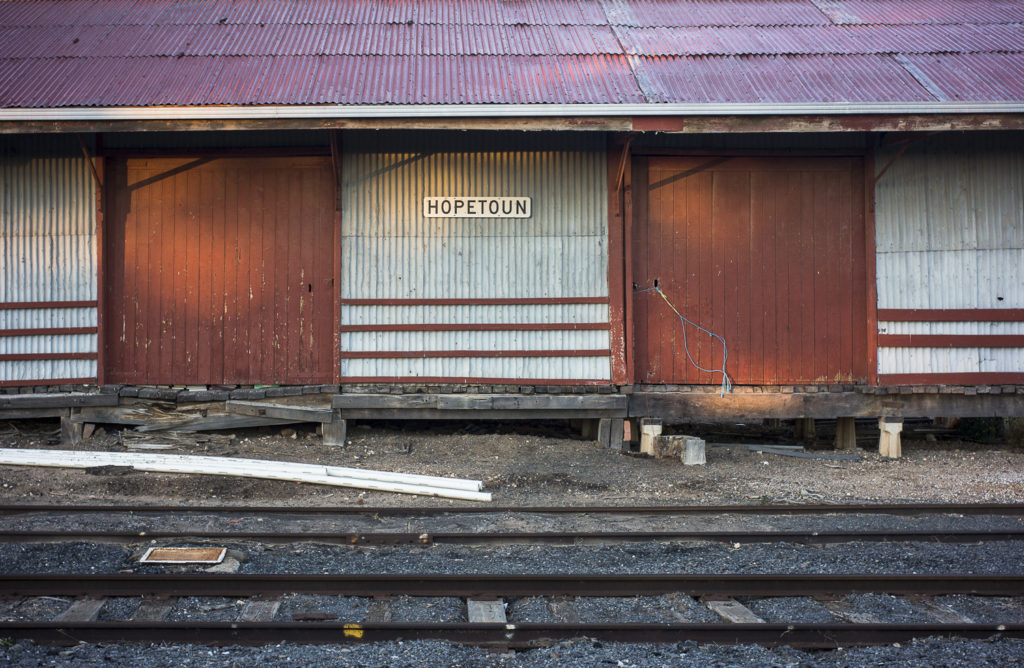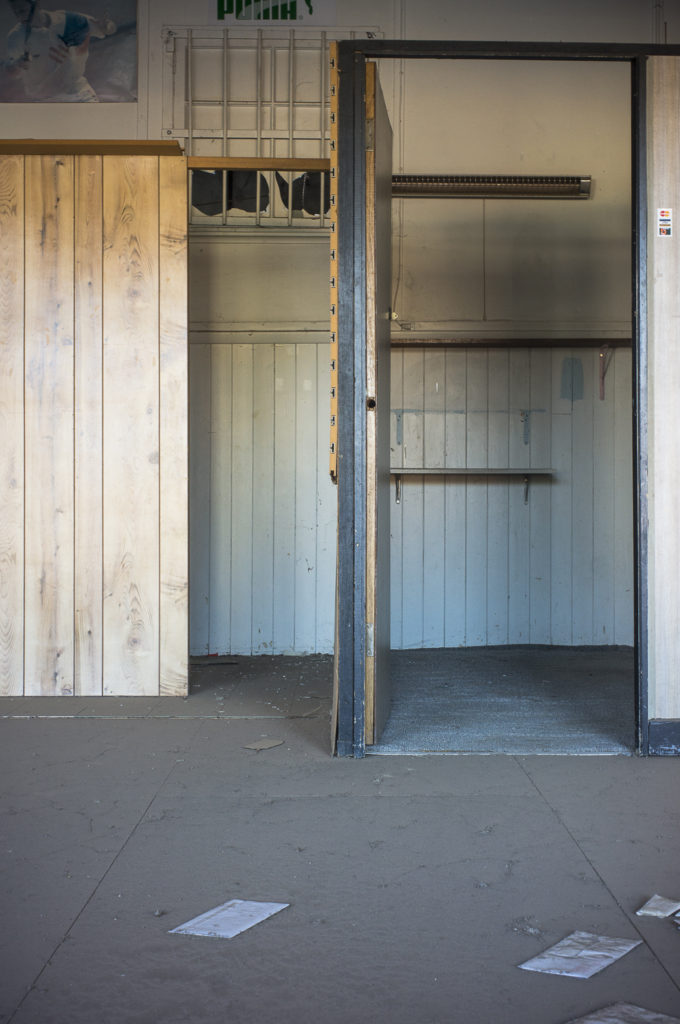With the initial exhibition of the Mallee Routes project Atkins Photo Lab finishing at the end of November I interrupted the archive project I was working on to go on a photo roadtrip to Hopetoun to build up my archive for the next exhibition, which has been planned to take place in 2017. Two overcast days after a big storm provided me with an opportunity to spend several days in the Wimmera Mallee, initially working on the silo project around Murrayville whilst the cloud cover remained. I then linked up with Gilbert and Eric at Hopetoun to explore the north western mallee region of Victoria.
This was the first time on the project that we worked and camped together. We were on the cusp of the summer, and though we only experienced one very hot, dry day with a north westerly wind, the recent heavy spring rains meant that there was a lot of stagnant, standing water lying around the countryside. This meant that it was a good season for the mosquitoes, and we experienced plague proportions of them, which, in turn, made camping at Hopetoun rather difficult.

Though I’d seen the Hopetoun photos of Leanne Cole on the web the area around Hopetoun was new territory for me. This is wheat country in the form of agri-businesses–ie., corporate farming— with its agricultural history one of achieving and celebrating human mastery over an unruly nature. On this road trip the farmers were starting to harvest their crops; the grain silos were being worked on, the wheat trains were on the move and the trucks were coming and going carrying wheat from the individual farms to the various silos.
What was noticeable was how the depopulation of the countryside due to the small family farms being replaced by agri-businesses meant that the population of Hopetoun and nearby towns, such as Sea Lake and Woomelang, continued to drop, as part of the gradual decline in the economic and social wellbeing of the region. What was also noticeable was that Hopetoun had built a man made recreational lake (Lake Lascelles) with water from the Wimmera Mallee pipeline to help regenerate the town. However, though the lake attracted the grey nomad caravaners, these tourists were not spending any money in the town itself.

The consequence was that a lot of the older shops that existed in the Hopetoun of the 20th century were empty, and they looked as if they would remain empty and slowly decaying. The memories of past lives, distant loves, loved ones remembered, haunting traumas and dreadful deeds are still strong here, and this fabric of memory continues to help to bond the local community. It connects people to the shared experience of their world.
One of the conversations that the three of us whilst at Hopetoun was about our observations that in the art world there is an increasing tendency for art photography to focus on the art world itself–including the nature of photography— rather than the societal and environmental challenges that we currently face in Australia. The former photographers are the ones selected by a narrow art elite to be celebrated. This art elite wrongly sees a more popular photography as a dumbed-down photography. Photography can connect the living with the living and also the dead.
Consequently, there is a need for the emergence of photographers, artists, writers, curators, art publications and galleries to work together to enable the insights into contemporary life in Australia to be fused with a sophisticated artistic imagery and to be made public for people to see. The internet opens up possibilities to allow art photographers working within the sensuous cognition of a realist aesthetic to leapfrog the traditional elite art gallery/magazine system in the state capital cities.


[…] wheat was everywhere whilst I was on the Hopetoun road trip. I took few 35mm snapshots of the dryland wheat fields with my old Leica on my way back to our […]
[…] innovative representation of the Victorian Mallee that I came across whilst on the Hopetown phototrip in 2016 was the murals that were being painted on the silos throughout the Victorian […]
[…] strong local culture, community, social life and sense of place. The Mallee, judging from my Hopetown photo road trip, has a strong and deeply rooted regional identity. […]
[…] is standing water at Lake Lascelles in Hopetoun, which is filled with water from the Wimmera Mallee Pipeline. Hopetoun is not […]